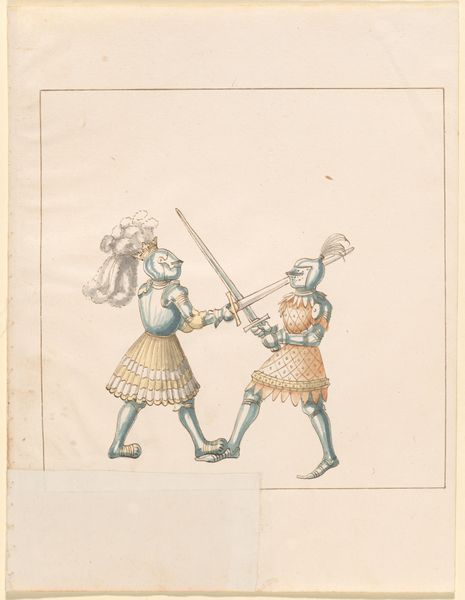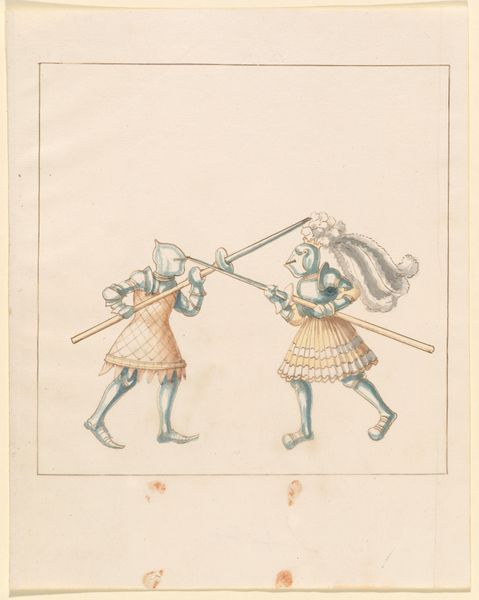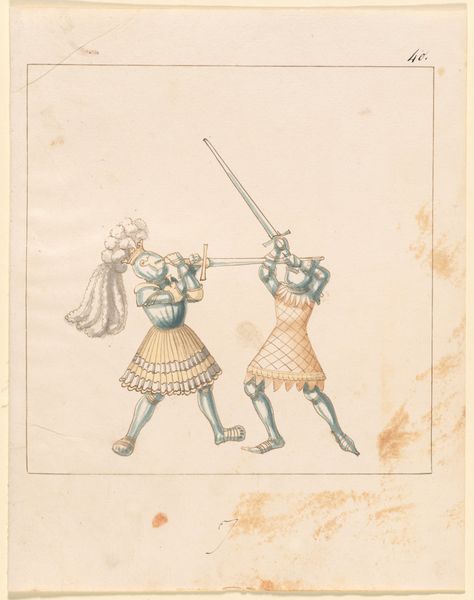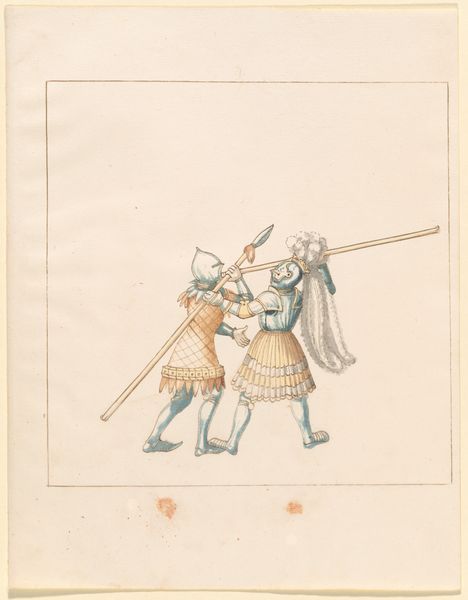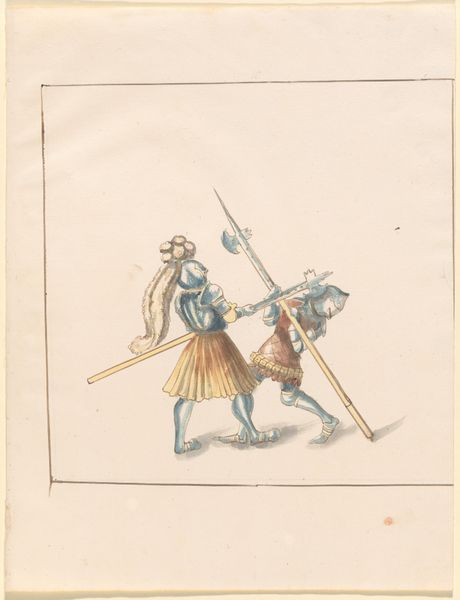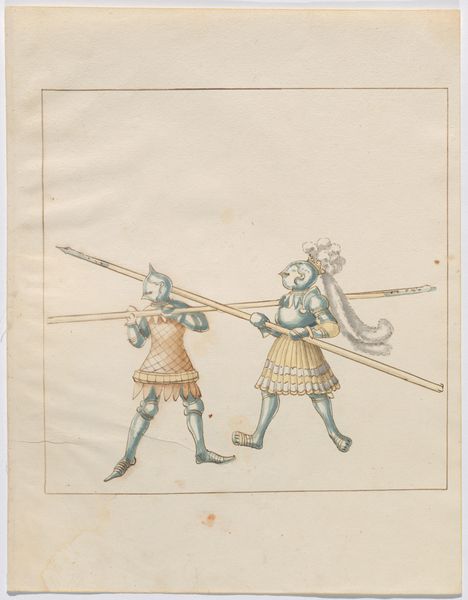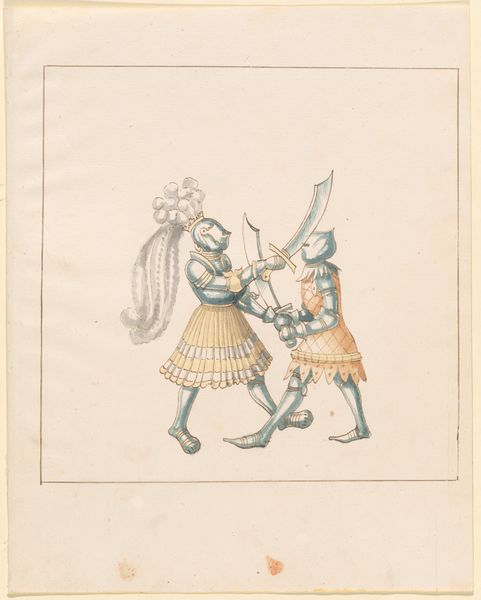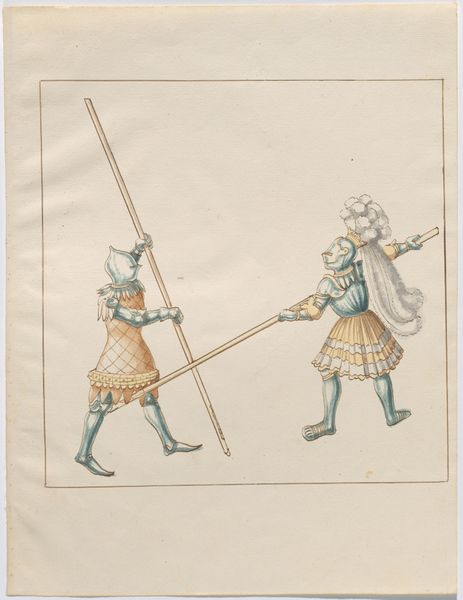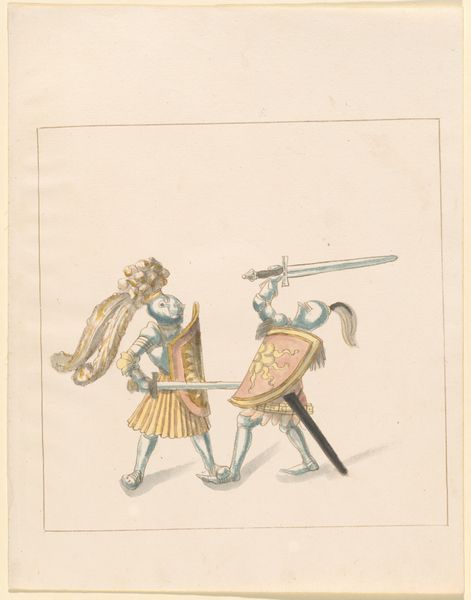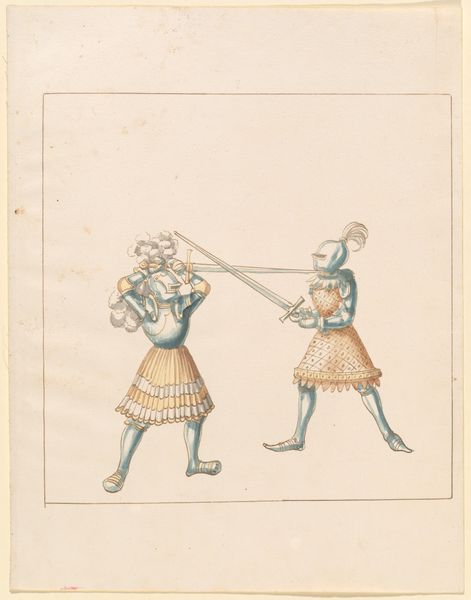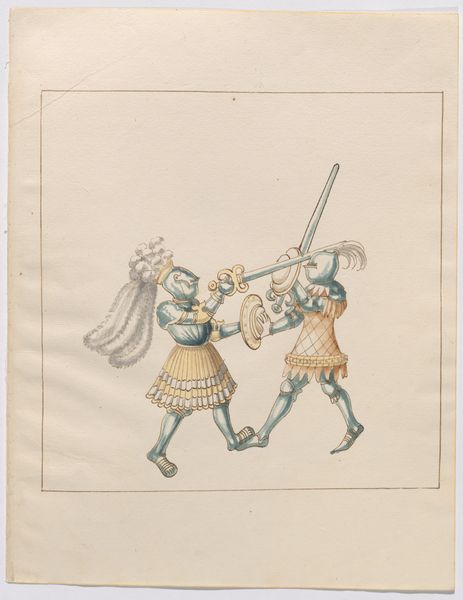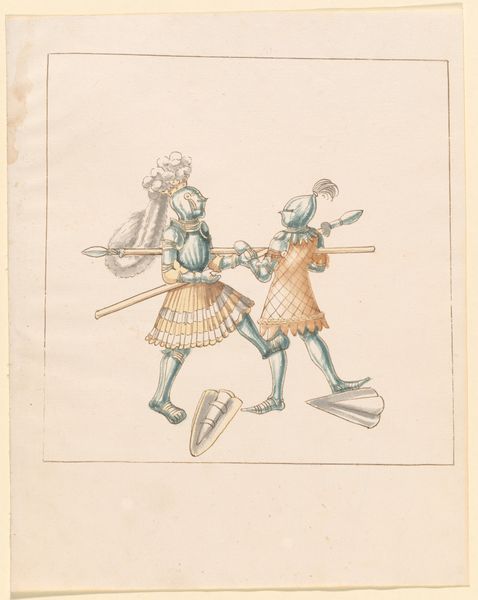
Foot Combat with Swords, Throwing Stars, and Shields (Tartschen) c. 1512 - 1515
0:00
0:00
drawing, watercolor
#
drawing
#
medieval
#
figuration
#
11_renaissance
#
watercolor
#
watercolour illustration
#
history-painting
Dimensions: sheet: 32.9 × 26.1 cm (12 15/16 × 10 1/4 in.)
Copyright: National Gallery of Art: CC0 1.0
Curator: Let's consider this watercolor drawing entitled "Foot Combat with Swords, Throwing Stars, and Shields (Tartschen)," dating from about 1512 to 1515, by an unknown artist. What are your initial thoughts? Editor: Well, it immediately strikes me as a depiction of masculinity and aggression in a very ritualized context. The combatants seem almost theatrical, caught in a dance of power and dominance. Curator: The materials themselves speak to a certain status. Note the attention to detail in rendering the armor and weaponry, indicative of their importance. Watercolors allowed for precision but were also transportable, suggesting that the process of creating this artwork was relatively flexible and may have been didactic in nature. Editor: Precisely. And thinking about that status, who are these men? Are they common soldiers, nobles, enacting some symbolic battle? It is difficult to assume anything from the flat rendering in the portraiture; there is little expression. And the absence of a distinct background pushes it toward abstraction. It raises questions about access to power, perhaps hinting at the complex social hierarchies of the time, which were intrinsically related to their equipment. Curator: Absolutely. Consider the 'tartsche' or shields, essential pieces of gear fashioned meticulously. How would access to those materials and the training necessary to wield them influence power structures of the period? This object would be one that dictated, in very real terms, the relationship between social order, and physical capability. Editor: Yes, and think about the performative aspect as well. The scene suggests a specific mode of masculinity rooted in violence and display, both shaped and reinforced by social expectations and hierarchies. To reiterate that flat emotional landscape–it speaks of stoicism, doesn’t it? Like, "this is my role, it is not enjoyable necessarily, but this is it". Curator: A chilling notion when thought through in relation to our moment, which often seeks to reconfigure social constructs of violence in the hopes of undoing their oppressive dimensions. Thank you, these are some useful questions through which visitors might approach it. Editor: Indeed. By exploring the intersection of artistic representation, combat, and gender we can gain insights into the period's social codes and power relations, maybe inspiring resistance today.
Comments
No comments
Be the first to comment and join the conversation on the ultimate creative platform.
